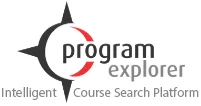• TOEFL
TOEFL Reading Factual Questions: Samples, and Tips for Reading Factual Information Questions
5141 Reads
3 min Read
Read the blog for in-depth insights on the TOEFL Reading Factual Questions. Discover practical strategies, tips and tricks to achieve the results of your dreams. Master these techniques and immerse yourself in the world of TOEFL learning.
Table of Contents
Read the Passage/Question
Identify the Keywords
Also read: TOEFL reading negative factual questions
Strategies to follow
The Art of Skimming-
Keyword Identification and Scanning
Elimination
Strictly follow the passage
Practice Beforehand
Also read : Tips for TOEFL reading module
Conclusion
Also read : How to prepare for TOEFL exam?
FAQ
Get great articles direct to your inbox
The latest news, articles, and resources, sent straight to your inbox every month.
Popular Universities to Study Abroad
World class education waiting for you.

INTO Group - Montclair State University
New Jersey, USA • 148 Programmes
Tuition Fee : USD 23000-24500 / year


Griffith University - Logan Campus
Queensland, Australia • 13 Programmes
Tuition Fee : AUD 32500-38000 / year

Bay Atlantic University - Washington
District of Columbia, USA • 12 Programmes
Tuition Fee : USD 10000-11000 / year

Birmingham City University - City South Campus
England, UK • 15 Programmes
Tuition Fee : GBP 13500-14000 / year

University of Stirling - Ras Al-Khaimah Campus
Ras Al Khaimah, UAE • 8 Programmes
Tuition Fee : AED 0-0 / year

International School of Management - Frankfurt Campus
Hesse, Germany • 20 Programmes
Tuition Fee : EUR 11400-11400 / year

Engineering Institute of Technology - Melbourne Campus
Victoria, Australia • 4 Programmes
Tuition Fee : AUD 0-0 / year
Popular English Language Proficiency Exams
Blogs and Articles
Curated content to keep you updated on the latest education trends, news and more.
ACT vs. SAT: Which One to Choose?
Updated on • Apr 12,2025 05:40 PM IST • Study Abroad
Updated on • Apr 11,2025 05:53 PM IST • IELTS
Backlog Certificate: A Complete Guide
Updated on • Apr 11,2025 01:47 PM IST • Study Abroad Guidance
PTE Score Chart 2025: PTE Exam Scoring System & Calculation
Updated on • Apr 09,2025 05:37 PM IST • PTE
Master's in Computer Science in the USA
Updated on • Apr 08,2025 05:59 PM IST • USA
Top Trending MBA Specialisations in 2025
Updated on • Apr 08,2025 04:47 PM IST • Study Abroad
Describe Your Hometown IELTS Speaking Part 1 Topic
Updated on • Apr 07,2025 05:50 PM IST • IELTS
How to Get a Job in USA in 2025
Updated on • Apr 07,2025 03:19 PM IST • USA
Highest Paying Jobs in the World
Updated on • Apr 01,2025 05:31 PM IST • Study Abroad
Student Life in Ireland in 2025
Updated on • Mar 29,2025 05:50 PM IST • Ireland
Top Public Universities in Germany
Updated on • Mar 26,2025 04:33 PM IST • Germany
Top Universities for Masters in Ireland in 2025
Updated on • Mar 25,2025 04:36 PM IST • Ireland
Cost of Living in Singapore for Indian Students in 2025
Updated on • Mar 22,2025 11:57 AM IST • Singapore
PTE vs IELTS : Know the Difference and Which is Easier?
Updated on • Mar 21,2025 03:38 PM IST • IELTS
Updated on • Mar 20,2025 10:19 AM IST • Germany
Updated on • Mar 12,2025 11:20 AM IST • Ireland
Updated on • Mar 11,2025 01:18 PM IST • USA
Best Countries to Study Abroad for Indian Students in 2025
Updated on • Mar 08,2025 01:24 PM IST • Study Abroad
Updated on • Mar 05,2025 12:19 PM IST • UK
Fastest Growing Job Sectors in Germany in 2025
Updated on • Feb 28,2025 04:04 PM IST • Germany
Related Blogs and Articles
A little effort to provide an authentic and reliable content for keen readers!!
How can I Master TOEFL Vocabulary?
Updated on • 16-08-2024 • TOEFL
Updated on • 13-08-2024 • TOEFL
TOEFL Accepted Universities in USA
Updated on • 08-07-2024 • TOEFL
How Long is the TOEFL Score Valid?
Updated on • 08-03-2024 • TOEFL
A Guide to Minimum TOEFL Score for Canada Student Visa
Updated on • 12-02-2024 • TOEFL
TOEFL score chart: TOEFL iBT Scores
Updated on • 08-02-2024 • TOEFL
TOEFL Accepted Universities in UK
Updated on • 31-01-2024 • TOEFL
TOEFL Inference Questions: Examples, Tips and Strategies to Answer Inference Questions
Updated on • 12-09-2023 • TOEFL
TOEFL Writing Topics and Tips to Prepare for the TOEFL Exam
Updated on • 01-09-2023 • TOEFL
TOEFL Reading: An Introduction to TOEFL Reading Section
Updated on • 08-08-2023 • TOEFL
Types of Questions in TOEFL Speaking Task 1
Updated on • 05-08-2023 • TOEFL
TOEFL Preparation: Learn the Best Tips & Strategies
Updated on • 14-07-2023 • TOEFL
TOEFL Listening: An Introduction to TOEFL Listening Section
Updated on • 11-07-2023 • TOEFL
TOEFL or IELTS: Which test should you take to study abroad?
Updated on • 08-07-2023 • TOEFL
TOEFL Reading: Negative Factual Questions
Updated on • 04-07-2023 • TOEFL
Know The Differences Between IELTS and TOEFL!
Updated on • 22-06-2023 • TOEFL
TOEFL Exam Fee in India 2023 : Everything You Need to Know
Updated on • 22-06-2023 • TOEFL
Top Tips to ace Your TOEFL Listening Module
Updated on • 22-06-2023 • TOEFL











